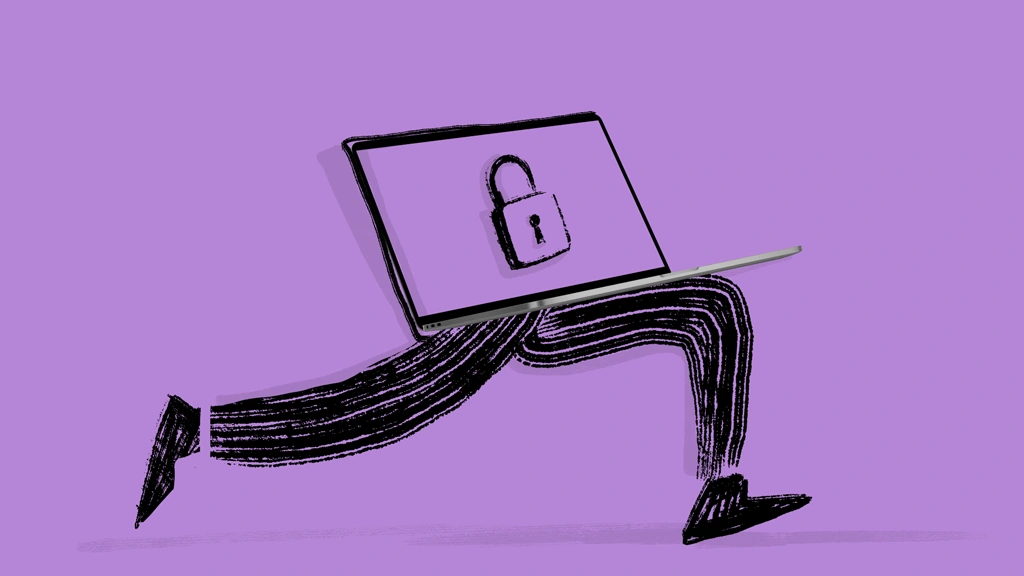MDM Automated Remediation: What is It & Why is It Important?

The best mobile device management (MDM) protocols balance security with convenience. In the end, the primary motivator for working with an MDM software company like Addigy is to save time and keep your network working at 100%.
No matter the size of the organization, MDM becomes problematic when it takes excessive work from IT administrators to keep their network secure. When your MDM strategy does not include automated remediation, it costs you time and money. In the worst cases, failure to regularly check systems can lead to data breaches that jeopardize the overall functionality of a business.
As a leading cloud-based MDM software provider, Addigy has gone to great lengths to develop automated remediation technology that keeps networks updated and functional. With automated remediation, you not only keep mobile devices more secure, but also cut back on the labor involved with maintaining your network.
What is remediation?
Automated remediation is the use of technology to audit and enforce security protocols that fail to work within your network. To illustrate, if your MDM software is programmed to block OS updates, you need a method to ensure the protocol is working. In the event that OS updates are not blocked successfully, the IT administrator needs a way to spot and remediate the problem.
With automated remediation, MDM software is programmed to catch glitches in your network and notifies the IT administrator accordingly. If your MDM doesn’t feature automated remediation, your IT team is forced to manually monitor your network. In certain cases, they must develop costly custom scripts to catch these network glitches.
Addigy provides clients with a robust platform of MDM solutions that include enterprise mobility, as well as remote monitoring and management. With Addigy, you will retain a clear picture of your network and each individual device at all times. Even better, you automatically get notified if a problem needs remediation – so you can take the appropriate steps.
Why IT teams need an MDM solution with remediation
Whether you are supporting a small brick-and-mortar business or a large multinational enterprise, it’s critical that you use your time wisely. Investing in an MDM solution with automated remediation is a great way to ensure you only spend time on important tasks, as opposed to scrambling to fix small problems.
Proactive vs. reactive MDM
One of the biggest selling points of automated remediation is that it is a proactive security measure.
There is probably nothing more stressful than a work environment that requires its team to constantly put out fires. If you are constantly in crisis mode and pouring labor into remedial tasks like ensuring OS updates are blocked, you are never in a position to advance your priorities.
While it is impossible to eliminate user errors and software glitches altogether, you can affect the way that you handle such problems. By using MDM automated remediation, IT admins are set up to successfully handle problems quickly. Taking a proactive approach to remediation will keep your network running smoothly at all times.
Better end-user support
With MDM automated remediation, end-users within your ecosystem get better overall IT support. Not only does auto-remediation catch security problems before they become big issues, but it allows employees to get their jobs done as needed.
In the end, you want the employees to focus on what they do best. If the network keeps crashing, people cannot complete their daily duties.
All things considered, giving end-users the highest performing network possible is a great way to ensure their productivity.
Increased security
If your MDM solution does not include compliance remediation, it puts your network at risk for cyberattacks and data breaches. Without the added security of automation, your network will simply have too many security liabilities. Whether it be lost business due to a data breach or the financial consequences of a compliance infraction, you simply can’t afford these types of mistakes.
When it comes to keeping your Apple network functional, security and updates go hand in hand. Luckily, automated remediation will help catch any potential problems that arise with cybersecurity and system updates. Whether it be delaying updates or testing new iOS software with mobile apps, auto-remediation will help reduce end-user downtime.
With automated remediation, you can respond to security problems quickly and efficiently. By being prepared, you will keep minor issues from turning into major problems.
Less work for IT administrators
Profitability is intimately bound to efficiency. To operate as lean as possible, you need the correct tools and technologies to work efficiently.
MDM auto-remediation gives IT admins time back into their days with alerts. Instead of having to manually comb through the network for problems, IT admins can take immediate action on alerts when they arise. Even better, they will enjoy a more rewarding work environment without having to spend so much time on busywork.
By handling small problems when they come about, IT admins can avoid bigger issues. Especially when it comes to security problems like data breaches, catching the leak immediately is critical for stopping a potentially dangerous and costly scenario.
Count on Addigy for MDM automated remediation
Addigy MDM software is engineered with auto-remediation measures in place. With our intuitive and convenient platform, you can manage your Apple device ecosystem from a single centralized location. With Addigy, you get alerts when security measures aren’t working up to speed so your network always functions at its very best.
Addigy is the only cloud-based, multi-tenant device management software that makes it easy to conduct Apple device management from anywhere in the world. Addigy’s platform includes automated remediation, a feature that ensures you and your end-users remain productive and secure in your daily workflows.
Want to learn more about this feature? Schedule a demo with Addigy today!

No matter what industry you do business in, employee turnover is a real threat. When a team member leaves, not only must you put resources into replacing them, but you must also account for their devices.
Whatever your equipment management software, you must get control over this individual’s access to your organization’s data and systems.
If you already have a remote, cloud-based IT management tool like Addigy, you already have all the tools you need to successfully transition team members in your network. For those of you less familiar with an MDM platform, here are a few considerations for evaluating your organization’s readiness for employee turnover and device provisioning.
Determine the right approach for the situation
There are countless reasons why an employee might leave your organization. In one instance, an employee might be retiring after 25 years of hard work and dedication. In another example, a team member might abruptly quit after just a couple of weeks on the job. To figure out the best practices for proper employee offboarding, you should consider the reason and timing in which they plan to leave your organization.
Voluntary departure with notice
In the event a team member is departing voluntarily and has provided ample notice, you should make it a priority to get their devices back. In many organizations, the HR team requests that people return devices on their last day. If the employee is working remotely, you should request they mail back their device. Please note that employee data theft can happen at any point during their employment, but you may run a higher risk after people have put in their final notice.
Voluntary departure without notice
If an employee departed voluntarily but gave no notice, you can request that they return their devices within a certain time frame. However, if you have concerns about their trustworthiness, it might be prudent to get the device back ASAP.
Until you get your device back, you should have a protocol in place to ensure that they aren’t communicating inappropriate data or taking any proprietary information with them. Of course, you should also coordinate with HR to make sure all accounts and logins are shut down, and that a remote lock has been applied.
Involuntary departure
If a team member was terminated involuntarily, the situation is more complicated. Please note, that when people are fired from their jobs, they are sometimes tempted by revenge. That being said, you should have equipment asset management software in place that keeps careful tabs on their activity. If your HR department has a severance package put together, they can likely leverage it in exchange for their device and equipment.
If you aren’t sure about the best MDM policy for a particular employee departure, here are a few questions you should ask yourself:
Have you limited their access to trade secrets, email accounts, and other sensitive data with equipment asset management software?
Have you taken careful inventory of the employee’s devices with equipment inventory management software?
Did your team member follow the appropriate steps for voluntary employee departures?
Ideally, going over these questions will help provide some clarity on the best course of action for a team member. If you are unsure, it’s always best to be cautious when it comes to protecting sensitive company information.
What can you do when an employee walks away with an Apple device?
It can be extremely frustrating when an employee walks away with a company computer. Luckily, if your organization uses an Apple device management tool like Addigy, with equipment management software built-in, you are well-equipped to deal with these departure scenarios.
The most surefire way to deal with employee turnover and protect your organization is to couple your MDM with Apple Business Manager. For example, when a team member leaves your company, Apple Business Manager will help you rescind application licenses and permissions, manage logins, and even regulate device access. Apple Business Manager allows you to seamlessly manage a whole group of Apple devices from a single location.
If an employee leaves your company who uses single sign-on, the convenience is returned to your IT administrators. To this end, single sign-on allows IT admins to disable multiple features at once.
It’s also a good idea to use iCloud to back up user accounts and information when losing and hiring team members. While you can’t control if employees choose to leave your organization, having an automatic backup of your users’ data and activity can make the off-boarding process less stressful. This is particularly true if you find yourself faced with an uncooperative former employee.
All things considered, proper deactivation measures can be the difference between a large data breach or the seamless shut-down of an employee’s account. If you feel like you need to take additional steps, remote lock and remote wipe features are also indispensable tools for Mac equipment management.
Things to consider for BYOD programs
BYOD is short for “bring your own device.” If you have a BYOD program at your organization, you have to make the appropriate preparations for employee departures. Namely, you should anticipate that the employees will keep their devices when they leave.
With well-planned BYOD deployment, the terms and conditions of your company’s BYOD program should be clearly laid out for new team members. During the onboarding process, employees should be required to read and accept the terms and conditions of your BYOD policy, including all details with how their devices are managed via MDM.
When it comes time to leave, team members should be well aware that their departure will require certain steps regarding their mobile devices. Namely, removing any apps or information access that is authorized through single sign-on.
Using MDM for Apple products when employees leave
Having a cloud-based IT management tool like Addigy will help you maximize Apple’s best features. For example, if an employee walks off with one of your Apple devices, Addigy’s MDM platform will help you mitigate security risks and access, and even help control whether the device is turned on or off.
Whether an employee brings their own Apple device to your organization or they walk away with a company-owned machine, it’s in your best interest to establish a set of guidelines for protecting sensitive data. Doing so will help protect your business and keep things working smoothly when transitioning team members.
By combining strong HR policies with equipment management software like Addigy, you insulate your organization against any of the challenges that come with employee turnover.
Like this project
Posted May 18, 2023
Addigy Remote MDM Software includes automated remediation as it is essential to maximize security. IT teams can quickly plan, fix and update Apple devices. Lea…






